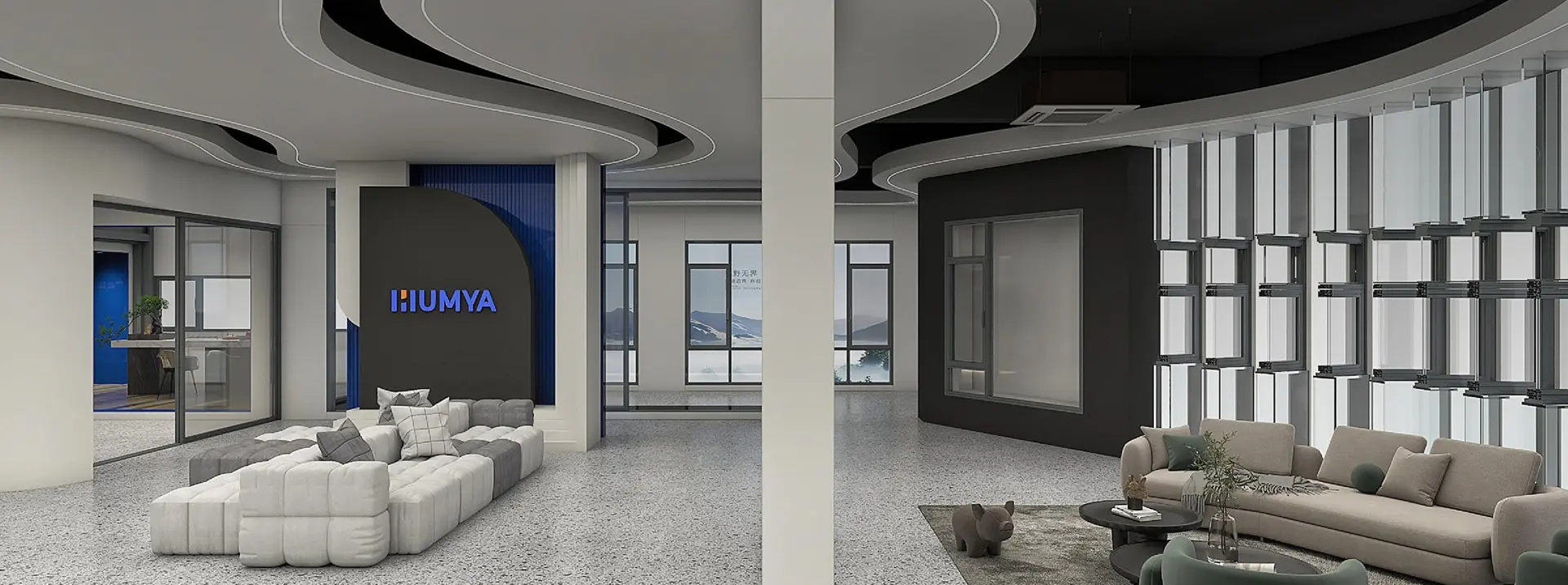
Cavity Sliding Door Trends to Watch in the Global Market by 2025
As we look ahead to 2025, the trends in the global market for Cavity Sliding Doors are poised to redefine the way we think about space optimization and design aesthetics. Cavity Sliding Doors, known for their innovative ability to save space while providing seamless transitions between areas, are becoming increasingly popular in residential and commercial settings alike. With advancing technology and a growing emphasis on modern architecture, these doors are not just functional elements; they are pivotal design features that enhance the overall ambiance of interiors.
The rising demand for Cavity Sliding Doors reflects broader trends in consumer preferences for versatility and style. As urbanization continues to shape living spaces, particularly in densely populated regions, homeowners and architects are turning to these doors as a solution for maximizing usable space without sacrificing elegance. In this blog, we will explore the exciting trends and advancements in the Cavity Sliding Door market, highlighting emerging designs, materials, and technologies that are set to transform the industry by 2025.

Emerging Designs: Aesthetic Innovations in Cavity Sliding Doors
As we approach 2025, the design landscape for cavity sliding doors is evolving dramatically, characterized by aesthetic innovations that cater to modern aesthetic sensibilities. The focus has shifted from mere functionality to the integration of style, turning these doors into statement pieces within homes and commercial spaces. Sleek lines, a variety of finishes, and customizable dimensions are now paramount, allowing architects and designers to create seamless transitions between interiors and exteriors. One of the most noteworthy trends is the use of materials that enhance the visual appeal of cavity sliding doors. Beyond traditional wood and aluminum, designers are experimenting with glass, metal, and sustainable materials that reflect contemporary tastes. Textured surfaces and mixed-material designs are popular, providing depth and dimension. Additionally, finishes that mimic natural elements, such as stone or aged wood, offer a sophisticated alternative while maintaining the modern aesthetic that homeowners crave. Innovation is also present in the mechanics of these doors. Soft-close mechanisms are becoming standard, ensuring smooth operation and a touch of luxury. Moreover, advancements in technology are introducing smart sliding doors that integrate with home automation systems, offering effortless control over lighting and security. As these doors continue to evolve, their role in enhancing both form and function in living spaces will undoubtedly solidify their status as a design must-have in the coming years.

Sustainability Focus: Eco-Friendly Materials and Technology Trends
The global market for cavity sliding doors is increasingly aligning with sustainability trends, reflecting a broader movement within various industries towards eco-friendly materials and technologies. As we approach 2025, consumer awareness around the environmental impact of construction materials is driving demand for products that not only enhance living spaces but also minimize ecological footprints. Reports indicate that by 2024, over 50% of all building projects are expected to incorporate sustainable practices and materials, a clear indication that the construction market is shifting towards green innovations.
Many manufacturers are now prioritizing eco-friendly materials such as recycled aluminum and sustainably sourced wood for cavity sliding doors. This aligns with a growing trend where consumers actively seek products that contribute to energy efficiency and reduced carbon emissions. Industry data suggests that the demand for sustainable building products is increasing at a compound annual growth rate (CAGR) of approximately 9% from 2020 to 2025. This demand is not only driven by regulatory pressures but also by a shift in consumer preferences towards brands that emphasize sustainability in their product lines.
Emerging technologies are playing a pivotal role in enhancing the sustainability of cavity sliding doors. Innovations such as smart manufacturing techniques and automation processes are helping to reduce waste and improve the overall quality of materials used. Furthermore, the incorporation of smart home technologies into sliding door designs not only increases convenience but also contributes to energy savings, aligning with the sustainability focus that is propelling market growth. As the industry continues to evolve, the intersection of design, technology, and sustainability will shape the future landscape of cavity sliding doors, making them an integral component of eco-conscious construction practices.

Smart Home Integration: The Role of Automation in Sliding Doors
The integration of smart home technology into everyday living spaces has revolutionized how homeowners interact with their environment, and cavity sliding doors are no exception. As we advance towards 2025, the trend of automating sliding doors is set to gain momentum, offering not just convenience but also enhanced security and energy efficiency. With the ability to control these doors remotely via smartphones or voice-activated devices, homeowners can ensure a seamless entry and exit process, reinforcing the modern notion of a smart home.
Automation is significantly elevating the functionality of cavity sliding doors. Equipped with sensors, these doors can detect movement and open automatically, providing a hands-free experience that is particularly beneficial for individuals with mobility challenges. Additionally, sophisticated systems that sync with home security networks can alert homeowners to unauthorized access, integrating safety aspects with ease of use. This combination of technology and design not only streamlines daily activities but also adds a layer of peace of mind.
Moreover, as energy conservation continues to be a priority, smart cavity sliding doors contribute to maintaining optimal temperature within homes. By integrating with home automation systems, these doors can close automatically when air conditioning or heating is in use, reducing energy consumption and enhancing overall efficiency. The push towards smart home integration is reshaping the landscape of sliding door designs, making them not only functional but also essential components of modern living.

Market Insights: Demographic Shifts Influencing Cavity Door Preferences
As we look forward to 2025, shifting demographics are playing a crucial role in influencing the preferences for cavity sliding doors within the global market. An emerging trend is the increasing demand from the Z generation, born between 1997 and 2012, who are increasingly valuing aesthetic functionality in their living spaces. This younger demographic prioritizes versatile design elements that facilitate seamless home integration, reflecting their lifestyle and individualistic tendencies.
In parallel, the aging population, particularly those over 60, is also driving changes in cavity door preferences. This segment emphasizes safety and accessibility, seeking door solutions that are not only stylish but also functional for mobility needs. The blend of these diverse demands is prompting manufacturers to innovate, leading to a surge in customizable sliding door designs that cater to various visual and functional criteria.
Ultimately, as these demographic shifts unfold, the global cavity sliding door market is expected to witness an evolution in both design and application, highlighting the importance of adapting to the preferences of a broader audience. The next few years will see a dynamic interplay between these generational needs, shaping the future landscape of home design and functionality.
Global Market Predictions: Key Regions Driving Cavity Sliding Door Growth by 2025
As we approach 2025, the global market for cavity sliding doors is set to experience significant growth, driven by key regions that are redefining architectural trends. North America stands out as a major player, where the demand for space-saving solutions in residential and commercial spaces is rising. With urban living on the rise and smaller living areas becoming the norm, cavity sliding doors offer an ideal solution, seamlessly integrating functionality and style while maximizing available space.
In addition to North America, Asia-Pacific is emerging as a dynamic market for cavity sliding doors, fueled by rapid urbanization and a burgeoning construction sector. Countries like China and India are witnessing a boom in real estate development, where innovative architectural designs are essential. The appeal of cavity sliding doors in these regions lies in their versatility and ease of installation, making them a popular choice among architects and builders aiming to create modern, open spaces.
Europe also maintains a strong presence in the cavity sliding door market, with increasing emphasis on sustainability and aesthetics. Eco-friendly materials and energy-efficient designs are becoming crucial for consumers, and manufacturers are responding with innovative products that cater to these preferences. As homeowners and designers seek customized solutions, the trend of integrating cavity sliding doors into contemporary interiors is expected to gain momentum, further promoting growth in this segment.




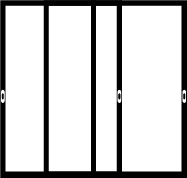 Sliding Door
Sliding Door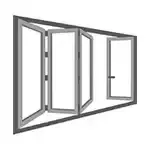 Folding Window
Folding Window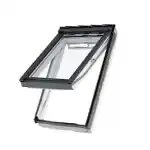 Skylight
Skylight Casement Window
Casement Window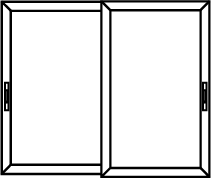 Sliding Window
Sliding Window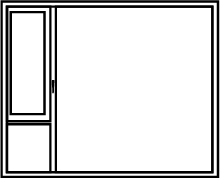 System Window
System Window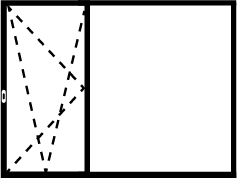 Tilt and Turn Window
Tilt and Turn Window Sun Room
Sun Room